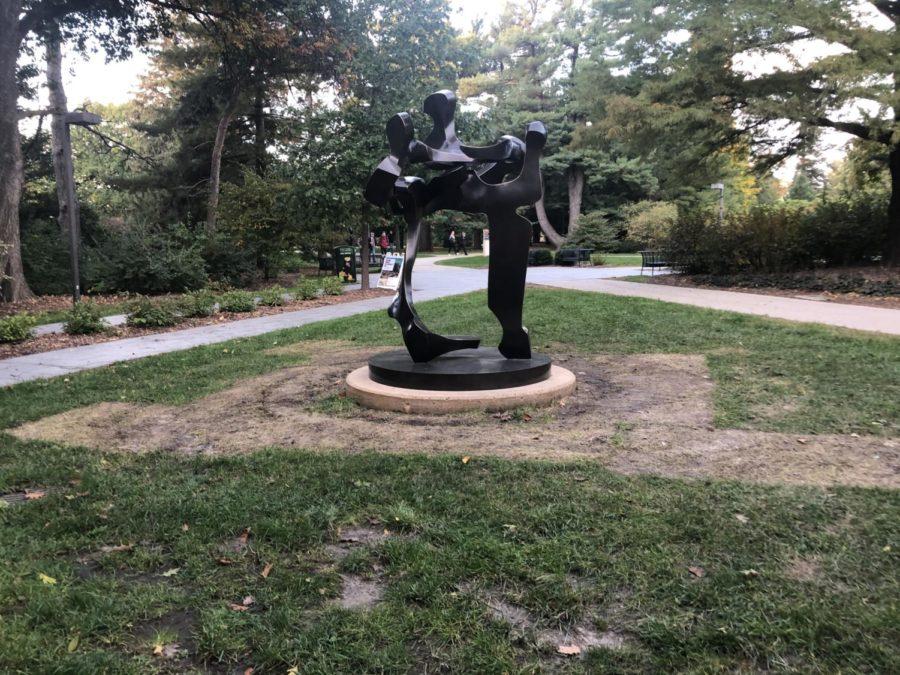Gerdin sculpture restored to original state after weeks of work
October 17, 2019
“Bravo III”, a contemporary piece of art, underwent restoration in late September to bring back the piece’s charm and color.
Bill Barrett, the creator of “Bravo III,” is known for his contemporary modernism-type work on sculptures. His piece was installed in front of the Gerdin Business Building on Iowa State’s campus in 2007 and has not been renovated since its first placement.
Sydney Marshall, a curator of University Museums at Iowa State, said that Barrett’s work was subjective and was chosen by an on-campus committee to be placed in front of Gerdin.
“Most of his work [is] very abstract,” Marshall said. “It’s very flowing, [there is] movement, […]. He fabricated it all himself. It’s very impressive that he did it this way, that it’s all kind of pieces that he would’ve molded together and welded together […]. That’s a particular style.”
The restoration process required three weeks of strenuous work on the piece of art. Before the project started, a team of professionals came in to assess the sculpture for what needed to be done.
“There was a clear coat on the structure,” Marshall said. “And that is to protect it, but that was starting to fail. You could see lines of almost a chip in the middle of your nail polish […] which leads to different discolorations. Part of the patina was kind of failing because of that. In general, it was kind of uneven throughout the entire sculpture.”
To start restoring the artwork, the piece had to be stripped down to the patina, the original color on the surface of the scupture.
“We basically stripped all that [clear coat] off with steam cleaning,” Marshall said. “Then [we] put a chemical stripper on there and [left] it overnight. Then hopefully after two rounds of that, it’s off.”
After the chemical stripping, the crew worked on removing discolorations in the patina by evening out color throughout the entire artwork.
“You have to heat it so that the reaction happens more quickly,” Marshall said. “Then it’s a chemical mixture that then we [wipe] on with a cloth while its still really hot. […] We did basically two full layers of the patina and then kind of spot treatments in the places that had worn off.”
Once the chemical mixture was applied, the crew finished by polishing the sculpture.
Marshall said where edges of the sculpture come to corners, polishing was done to make it have more of a shine as the original artist intended.
The restoration was completed Oct. 8. Since then, “Bravo III” stopped corroding, and it will no longer continue to deteriorate. Part of the ongoing conservation process is performing inspections once or twice a year to ensure the artwork is washed and waxed as needed.

















